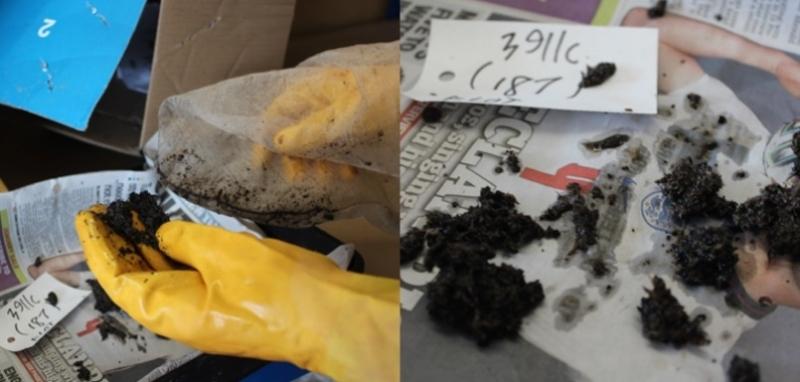Eastern Green Post Excavation: soil sample processing
The excavations at Eastern Green, south of the A45, Coventry, were carried out by L – P : Archaeology (now part of MOLA) on behalf of Orion Heritage and Hallam Land Management. You can read more about the site and the progress of the excavations through these weekly update blogs.
Welcome back to the blog! We might be finished on-site at Eastern Green, but the archaeologists' work doesn't end there. We are starting work on the post-excavation processes for this stage of the project, including cataloguing finds, processing soil samples, and of course, report writing. These are all very important parts of an archaeological excavation!
Followers of the blog may remember that back in January we took a look at the process of soil sampling on site. This involved taking samples of soil from particular features and contexts, such as pits and ditches, which will now be processed off-site and analysed by specialists to see what they can tell us about land use and activity on the site.

In this week's blog we take a visit to our Chester office, where work has just begun washing the samples to prepare them for analysis. Let's have a look at how it’s done!
To wash the samples, we use a flotation tank. A pump circulates water through the tank, whilst mesh layers or bags collect the flot and residue.
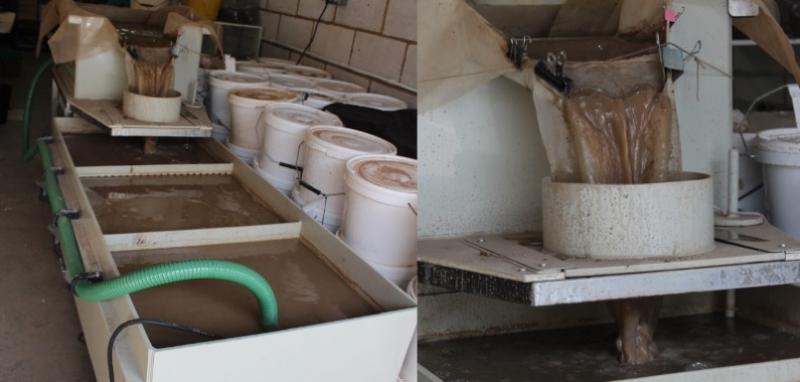
We take 40 litres of soil from each context or feature sampled, which is four of the white buckets below! Each are carefully labelled so we know exactly where they came from.
The soil is then broken up by hand to allow it to separate. The archaeologically important remains in the sample are captured by the mesh, whilst the soil sinks down to the bottom of the tank.
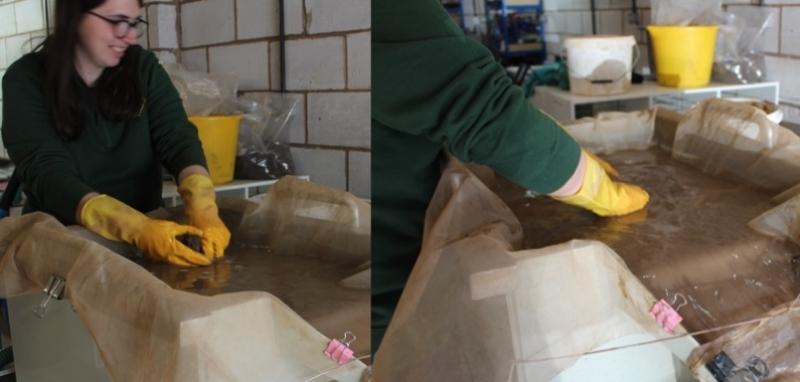
The aim is to separate the lighter remains called flot or light fraction (which contains organic material such as charcoal). These float to the top of the water, while the heavier material (residues or heavy fraction) which can include small artefacts, as well as animal bone, flints, and small sherds of pot.
The residues sink to the bottom of the water and collect on the fine mesh. For organic material such as seeds to survive and float they need to have been charred. Once the flot has dried, it will be looked at under a microscope to determine what material there is. If charred seeds survive, they could tell us what people living on the site were growing and eating.
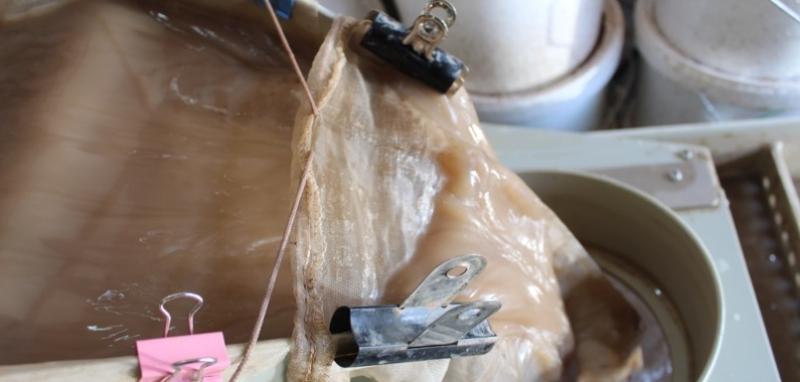
Floatation tanks can be handmade using buckets and barrels, but we have a nice high tech one, which pumps the water through and agitates the samples by itself!
Once the flot and residue have been fully washed and separated by the floatation tank, we need to put them to dry. First, we take the flot which has collected in a very fine mesh bag.
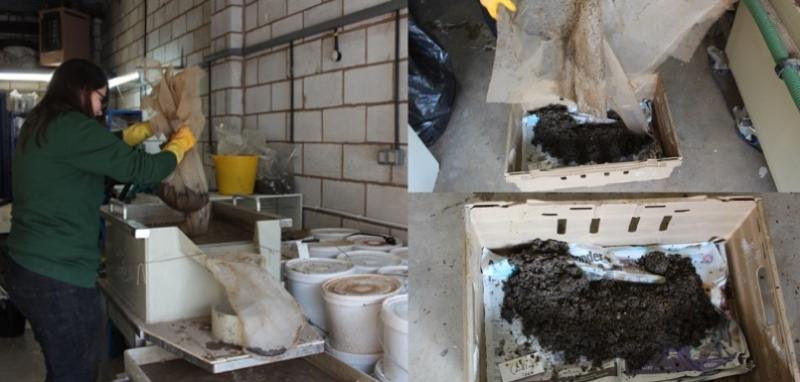
The residue collects on the mesh lining the tank. This will usually include stones as well as archaeological remains such as pottery, but all the soil has been washed away.
The flot and residue are then left to dry. The flot, which could contain organic remains such as charred seeds and charcoal, will be sent to our archaeobotanist Dr Matthew Law to be examined under a microscope, whilst the residue will be sorted by hand, here in the office. We look forward to sharing the results of our sampling, although based on the number of sample buckets we took at Eastern Green, this may be some time!
